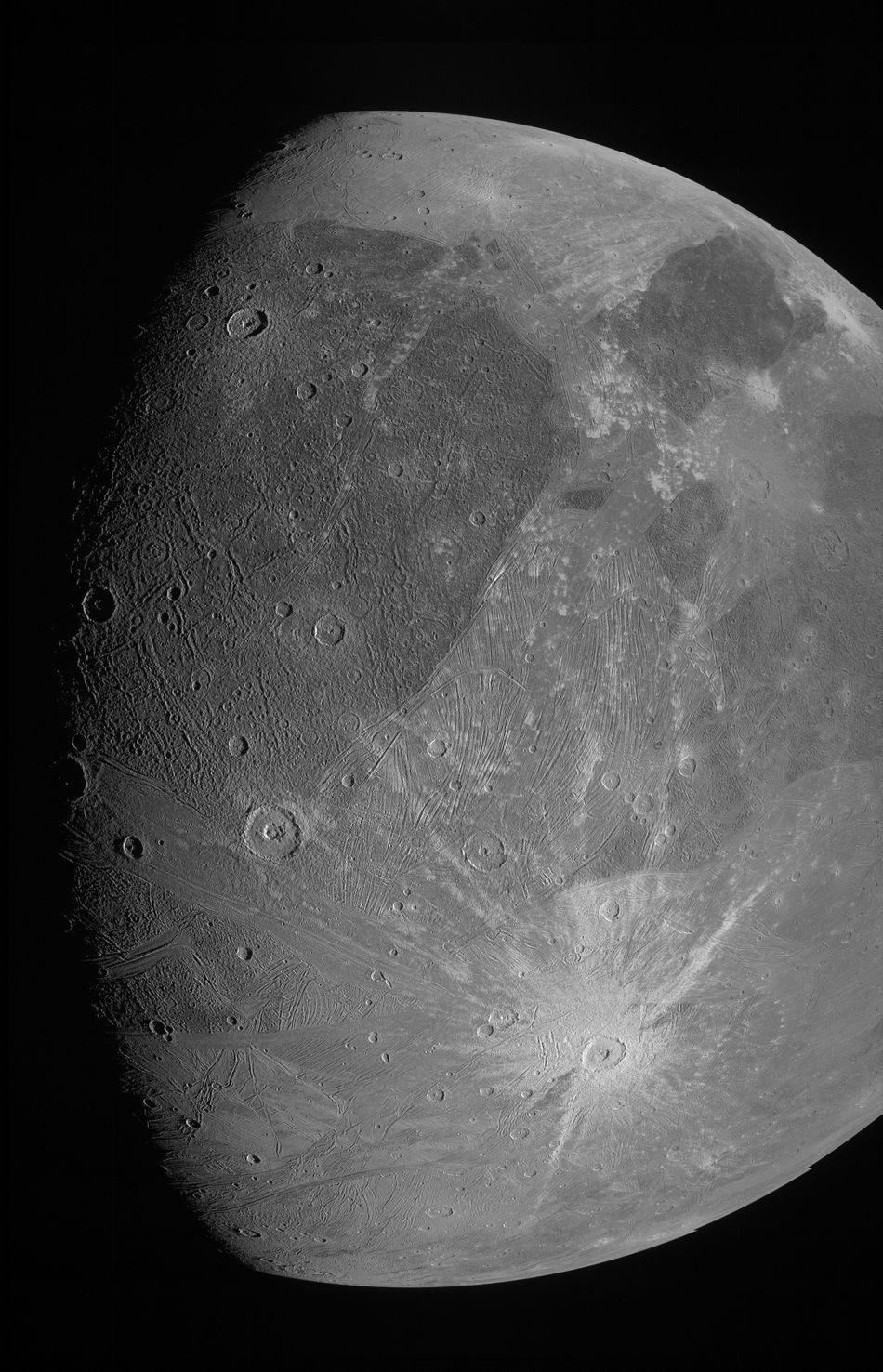Ganymede, a behemoth of an icy moon in Jupiter’s orbit, was captured in vivid detail by NASA’s Juno spacecraft on June 7. It was the closest flyby of the moon ever.
Photos shared by NASA Tuesday highlight stunning details of the surface of Ganymede. There are dozens of visible craters, contrasting light and dark terrains, and other large surface features that NASA says could indicate the presence of tectonic faults — the same kind of planetary faults that stretch across the surface of Earth.

The full scope of Ganymede taken by Juno, which reveals a majority of one angle of the moon.
Image: NASA/JPL-CALTECH/SWRI/MSSS
The images shared were taken using a green filter on Juno’s JunoCam, so they don’t quite represent the full spectrum of visible light. More photos taken with the red and blue filters should make their way to Earth soon to show off more of Ganymede’s color.
Another image taken of the moon’s dark side facing away from the sun gives more of an up-close view of the textured surface. This one was taken by a navigation camera, which worked well in the low light that bounced off Jupiter onto its moon.

Another image of Ganymede reveals the moon’s “dark side.”
Image: NASA/JPL-Caltech/SwRI
While Juno’s primary focus is to study Jupiter from orbit and collect data on the planet’s atmosphere, magnetic field, and interior, its massive moon Ganymede certainly makes for an interesting side project. And hey, if you’re flying by, you might as well take a look at the only moon larger than the planet Mercury.
There is strong evidence that beneath Ganymede’s thick, icy surface is a liquid ocean, a theory that stands for fellow Jupiter moons Europa, Callisto, and Io, as well as a few moons orbiting Saturn and Neptune.
Ganymede is the only moon in the solar system with a magnetic field, which cause glowing auroras like we have here on Earth as electrified gases in the atmosphere around the north and south poles move along magnetic field lines.
More data collected by Juno are expected to reveal new information about Ganymede’s surface, composition, atmosphere layers, and magnetosphere.
The new images of the moon are the first close-ups we’ve seen in more than 20 years.
WATCH: Mars will kill you in ways you’d never imagine

